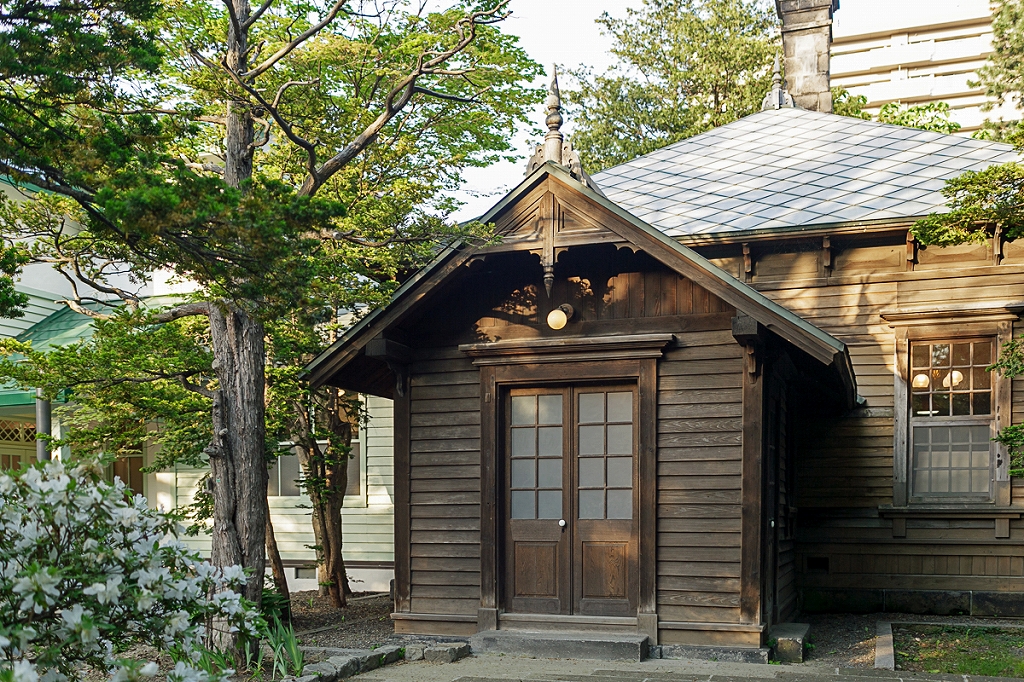
The Nagayama Takeshiro Residence, located to the east of Sapporo Factory

The Nagayama Takeshiro Residence, located to the east of Sapporo Factory
The Nagayama Residence was built in the early part of 1877 and provided a base for Nagayama – originally from Kagoshima – for more than 20 years from when it was built until he died.
The house expresses Nagayama’s resolution to live as a resident of Hokkaido.

An illustration from a catalogue of Sapporo’s prosperity (published in 1887). The road in the foreground is what is now Kita 3-jo-dori.
Look again at the Former Nagayama Takeshiro Residence and you will notice it differs from the image in the illustration. The current Former Nagayama Residence is just part of the building that existed in the past. Now, the part to the left is an extension that was added, which housed a dormitory for the employees of the Mitsubishi Mining Co., Ltd.
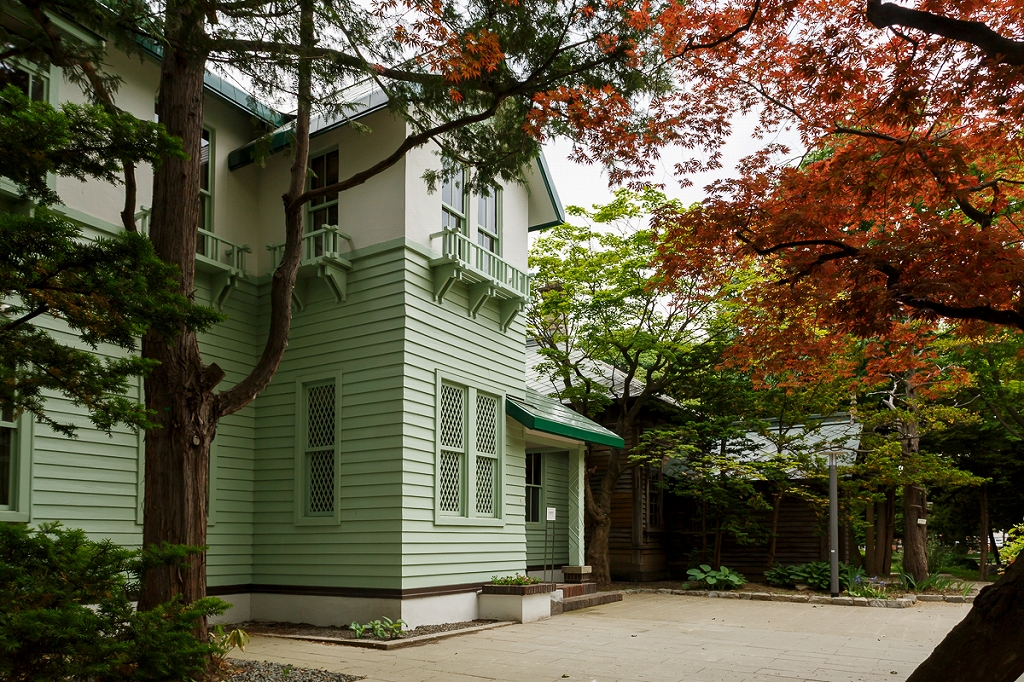
Mitsubishi Mining Company Dormitory
Former Nagayama Residence and Former Mitsubishi Mining Company Dormitory – adjacent buildings with different exteriors due to the different periods in which they were built. Let’s look at the characteristics and appeal of the Former Nagayama Residence.
According to Kado Yukihiro, Representative Director of the Research Institute for Historical Heritage, “The most appealing characteristic is the direct link between its Japanese and Western styles.”
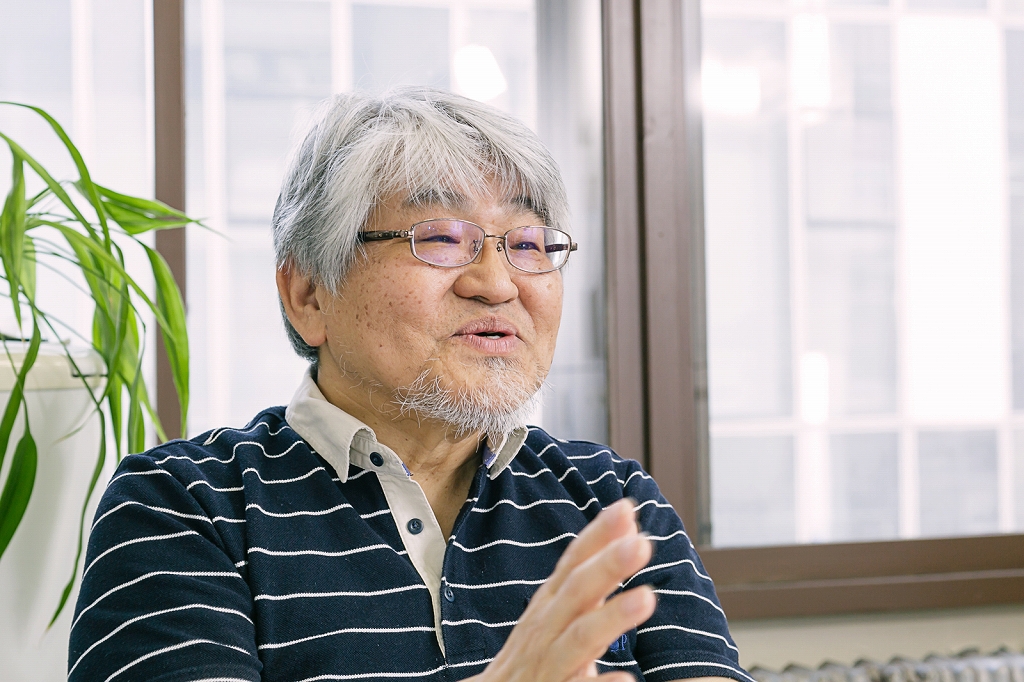
Kado devotes himself to the preservation and utilization of historical structures in Hokkaido
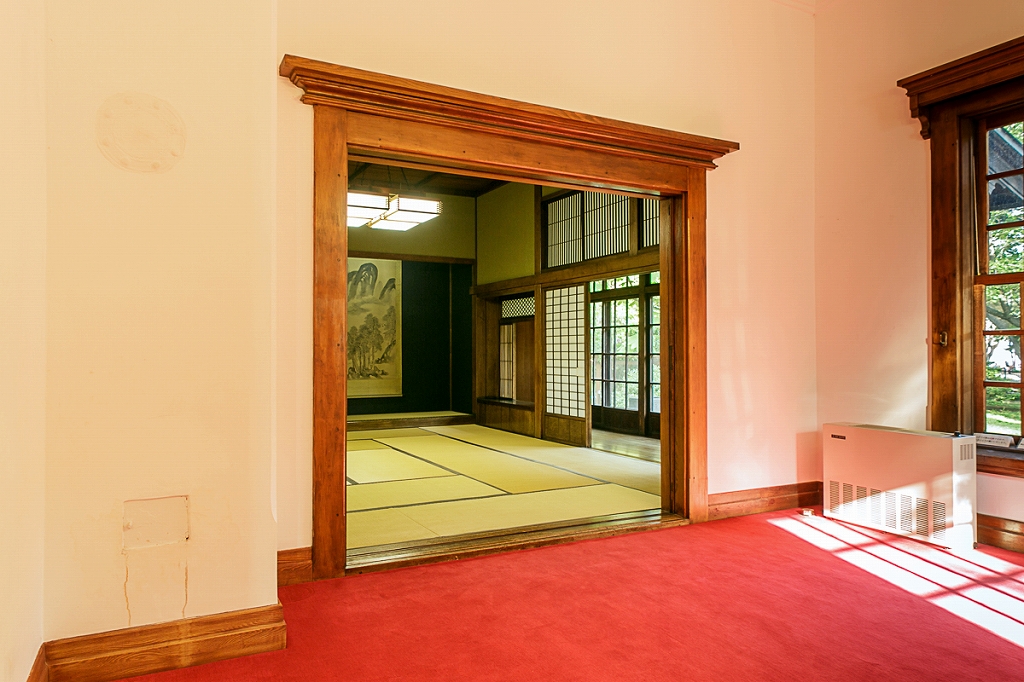
The Western-style drawing room and Japanese-style drawing room are directly linked. At the time, Western-style rooms were usually located in separate wings or on different sides of a corridor.
It is said that the Development Commission wanted to try and introduce a Russian-style cold-weather-region house but, for some reason, there is only one Western-style room.
“Maybe Nagayama thought that making it all Western-style would be difficult. The official residences with Western-style architecture based on lifestyles in which shoes were not taken off in the house, did not have genkans (Japanese-style entrances) but they actually took off their shoes as they entered. The Nagayama Residence had a step-like genkan. Both Japanese and Western aspects were necessary in his lifestyle, but he didn’t know how to take in these aspects. Therefore, the concept of linking them directly is currently quite a novel architectural element.”
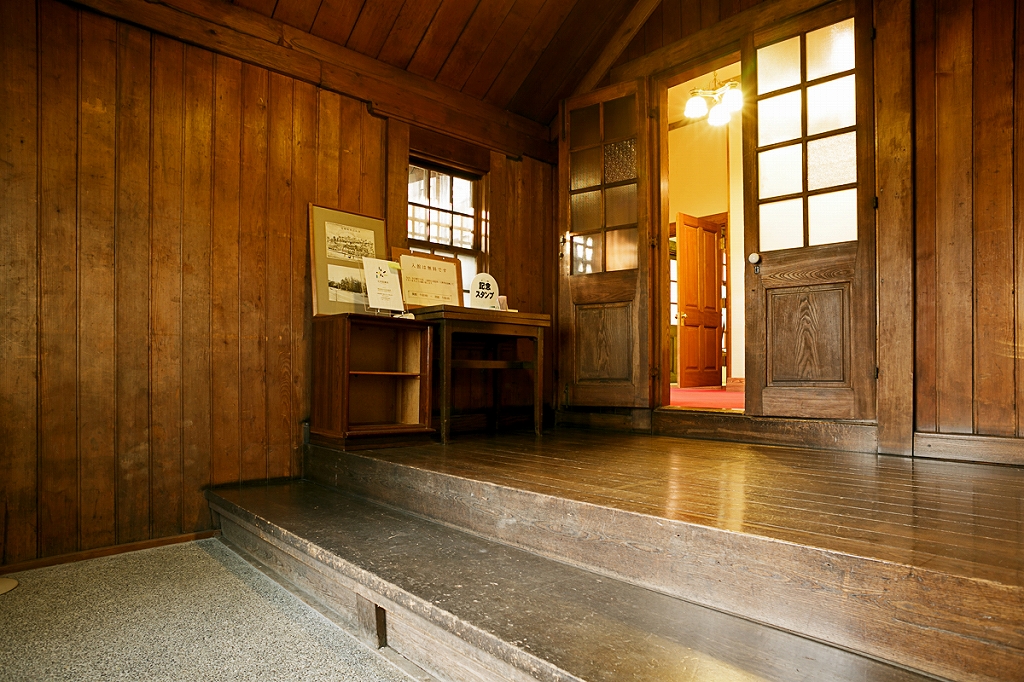
The floorboarded steps are a feature of a Japanese-style genkan
If you ever get the chance to visit the Nagayama Residence, take a look at the ceiling of the drawing room, where you will see a 3-D façade known as a medallion. The one in the Former Nagayama Residence has a maple leaf pattern.
Two more historical structures in the city of Sapporo – Hoheikan and Seika-tei – feature similar medallions.

The beautiful circular pattern that forms the base from which the lamp is hung

Seika-tei, near Sapporo Station (Photograph by Ida Yukitaka)
Seika-tei is similar to the Former Nagayama Residence, not only in terms of the medallion but also with regard to the exterior design and architectural style. From these common points, the report of a survey carried out in 1985 summarized that “along with the Former Nagayama Residence, the two facilities were probably both constructed in the same year, in 1880.”
“There is no conclusive evidence but it is probably correct. At the time, the Development Commission was in its heyday. If you consider that such excellent engineers supported the construction of the Nagayama Residence, its solid construction makes sense.”
Former Nagayama Takeshiro Residence – Sapporo City Former Mitsubishi Mining Company Dormitory 
Kita 2-jo Higashi 6-chome, Chuo-ku, Sapporo, Hokkaido
Tel.: 011-232-0450
Hours: 9:00 to 22:00(Rooms can be rented until 21:00. The café opens at 11:00.)
Closed: Every Monday, 2nd Wednesday in the month, year-end and New Year period
Admission free
Website